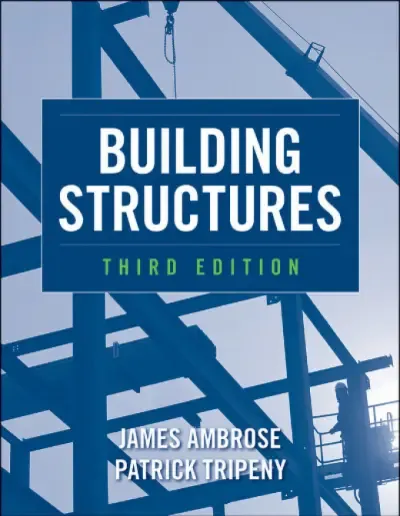Download Building Structures Third Edition By James Ambrose And Patrick Tripen Easily In PDF Format For Free.
This Book Covers The Topic Of Structures For Buildings In A Broad Scope And From Multiple Points Of View. The Primary Purpose Is To Provide A Reference For Study For Persons With Limited Experience In The Field And With Interest In The General Problems Of Design Of Buildings. Presentations In The Book Are Intended To Be Accessible To Persons With Limited Backgrounds In Mathematics, Science, And Engineering. The Materials In This Book Are Developed To Serve Two Primary Needs Of Readers. The First Is That Of A Text For Study For Courses Within A Collegiate Program In Building Design. The Second Is That Of A Study Reference For Preparation To Take The Exam For Architectural Registration (ARE), As Currently Prepared By The National Conference Of Architectural Registration Boards (NCARB).
Because Of The Broad Scope Of The Book, It Is Unlikely That Its Content Can Be Covered In A Single Course Of Instruction In A Typical College-Level Term Of 12–14 Weeks. This Depends, However, On The Type Of Course Work. Traditional Development Of Courses With Example Computations For Structural Elements And Systems Requires Considerable Time If A Range Of Structural Materials And Types Of Structural Elements Are To Be Treated.
If The Purpose Of The Study Is Limited To A General Acquisition Of Understanding Of Basic Concepts, Issues, And Design Problems With No Involvement In Structural Computations More Of The Book Topics Can Be Covered In A Shorter Time. The Latter Form Of Study May Be Undertaken In A Collegiate Program And Is The General Case For Those Preparing For The ARE. A Guide For Course Instructors With Suggestions For Course Organization And Operation Is Provided On The Publisher’s Website.
The First Edition Of This Book Was Quite Large In Number Of Pages. The Second Edition Was Trimmed Down A Bit And This Edition Is Further Reduced In Size. Trimming Has Resulted In Some Reduction Of Materials But Has Been Mostly Accomplished By Careful Elimination Of Repetitions And Redundancies And By Stricter Concentration On The Specific Aims For The Book. Of Critical Importance For All Readers Are The Study Materials At The Back Of The Book. These May Be Used As A Guide To The Reader’s Accomplishment Of General Knowledge.
This Book Deals Broadly With The Topic Of Structures Related To Buildings. Emphasis Is Placed On The Concerns Of The Working, Professional Designers Who Must Cope With The Practical Problems Of Figuring Out How To Make Plans For The Construction Of Good, Practical, And Sensible Buildings. Designers’ Concerns Range From A Basic Understanding Of Structural Behaviors To The Determination Of The Construction Details For A Specific Type Of Building.
The Materials In This Book Are Arranged To Present A Logical Sequence Of Study. However, It Is To Be Expected That Few Readers Will Start At Page 1 And Proceed To The End, As If Reading A Novel. The Separate Book Chapters Are Therefore Developed As Reasonably Freestanding, With Appropriate Referencing To Other Chapters For Those Readers Who Need Some Reinforcement.
Additionally, At Any Time, The Reader Can Use The Table Of Contents, The Index, Or The Glossary To Seek Help In Understanding Unfamiliar Terms Or Ideas. This Book Is Intended For Possible Use As A Course Text But Is Also Prepared To Be Used For Individual Self-Study. In Fact, Even In A Classroom Situation Where Time Is Limited, Students May Well Require Considerable Time For Self-Study Outside The Classroom. Whether Required As
Homework Assignments Or Not, The Exercise Problems Provided For Individual Book Sections Should Be Used By Readers To Test Their Own Comprehension And Problem-Solving Skills. For This Self-Study Effort, Answers To The Problems Are Given, Although Readers Should First Attempt To Solve The Problems Without Recourse To The Answers. Skill In Performing Computational Work Cannot Be Achieved By Simply Following A Text Example; The Problems Must Be Faced By The Unassisted Reader.


Comments
Post a Comment